#Georgian Dublin
Explore tagged Tumblr posts
Text

Father Devlin of St Jude’s Sisters of Charity Convent, Dublin, and Petty Officer Davey Spence, from Armagh, formerly Subordinate Officers’ Steward on H.M.S. Sussex. being normal, as usual.
#no one to hear my confession cos the priest is off taking some fuck ass arctic ‘explorer’ (in a fight) CAN’T HAVE SHIT IN GEORGIAN DUBLIN#devlin#davey#digital art#tlfjn#jory.img
20 notes
·
View notes
Text
Operation Transformation
Exactly eight years ago, the Irish Aesthete visited No.3 Henrietta Street, Dublin and subsequently wrote about the house (see Opportunity Knocks « The Irish Aesthete). It was then for sale and in pitiable condition, having been turned into a tenement in the last century, with many of the original features such as the main staircase and the main chimney pieces stripped out and rooms subdivided to…

View On WordPress
13 notes
·
View notes
Text
The Provost's House at Trinity College has changed little since 1757

It is a superb example of college architecture during the Georgian era
#Provost House#Trinity College#Dublin#Ireland#18th century#Georgian architecture#Palladian window#Irish university#1757#iron gates#stone wall#classic design#academia#British Isles
44 notes
·
View notes
Text

Dublin, Feb 2024 🇮🇪
#Dublin#ireland 🇮🇪#🇮🇪#Irish#Ireland#architecture#georgian#Georgian era#georgian architecture#1790s#18th century#Eire
6 notes
·
View notes
Text



Sergeant's Jacket of the 16th Londonderry Militia from the British Empire dated between 1820 - 1830 on display at the National Museum of Ireland-Decorative Arts and History in Dublin, Ireland
Sergeants were often the main source of military knowledge in militia regiments since many officers were uninterested in the details of soldiering. Militias, fencibles and yeomanry regiments in the early 19th century were oppurtunities for nobles to gain the prestige of officers, as well as the uniforms, without fighting in the wars.
They would be part of the suppression of protests for equal rights and liberties, and in the case of Ireland, fighting French supporters during the Napoleonic Wars. It was near the end of the 19th century that such regiments became part of the Territorial Army and often found themselves in colonial conflicts and later European ones as well.
Photographs taken by myself 2017
#uniform#art#fashion#military history#19th century#georgian#regency#british empire#ireland#irish#national museum of ireland#dublin#barbucomedie
5 notes
·
View notes
Text

This charming book has a small chapter on same-sex relationships and tells of Georgian-period terminology (mostly regarding gay men and women, in that order!) and people of note. What the Georgians got up to is of interest to us here, as Dublin was a Georgian city and of course, the laws made in London during the Georgian period affected Ireland. Therefore, if you could be hanged for "sodomy" in England, you could be strung up in Ireland too.
But the book goes into the nuance of everyday life in the period versus what may be written in the law books. For example, in 1822, the Anglican Bishop of Clogher in Northern Ireland had been caught in the act with a guardsman - the Bishop was dismissed from his position, but from the public's point of view, he became a figure of fun and jokes. And so same-sex activity was "semi-known and semi-secret"; very serious and dangerous on one hand and part of the furniture and a source of amusement on the other.
Another hint at the Georgian's attitude toward queerness is the sheer number of terms used to refer to it! For the gay men we had "mollies", "back-gammon players" and "catamites" (a Classical reference to the mythologically handsome adolescent boy, whose beauty caused Zeus to steal him away to Olympus to serve him). For the lesbians we had "flats", "tommies" and "rubsters". In fact, it is semi-jokingly stated that lesbians did not exist before 1870, because the more euphemistic terms were in use instead!
These terms for same-sex love and identity shows an emergent social awareness for the LGBTQ community in the Georgian era. Albeit mostly for the L and the G!
And of course we know that lesbians existed in Ireland before 1870, just one example being "The Ladies of Llangollen", two upper-class ladies who lived together (with only one bed in the house!) for 50 years. While numerous Georgian ladies lived together as companions, Eleanor Butler and Sarah Ponsonby declared their loving relationship openly in upper-class society.
It seems that historical relevance and the holding of a powerful position in society both protected queer Georgians/Anglo-Irish aristocrats from punishment and encouraged historians to record their lives for our historical interests today. Therefore, there are no mention of everyday, "lower-class" Irish queers in this chapter of The Georgians. This is certainly a sad oversight in our LGBTQ+ history. But it's fun to read about 18th and 19th century queer people of note, especially the tommies and "female husbands" who I always picture dressed up like Gentleman Jack!
6 notes
·
View notes
Text

Dublin City Hall, first opened in 1779 as the Royal Exchange it has been used as city hall since 1851. Seen here with a fine blue sky.
#ireland#vsco#landscape#vscocam#irish#architecture#architectural photography#photographers on tumblr#photographers of tumblr#photography#travel#dublin#buildings#georgian architecture#blue sky#city hall
23 notes
·
View notes
Text
it's actually sinking in that I'm?? going to see Elvis Costello next week?????

#actual squee#can't wait to prove my always wrong friend wrong about seeing him live#just can't wait!#also a trip to a dublin art gallery? a few pubs? maybe make it to the georgian restaurant this time? don't mind if i do...
4 notes
·
View notes
Text

Dreamy bookstores
Boasting an attractive Georgian blue façade, Books Upstairs is “Dublin’s oldest independent bookshop.” Started in 1978, it remains one of the most charming ones that stocks a curated collection featuring primarily Irish literature and poetry. Book lovers wanting to discover the local literary scene will find the shelves of Books Upstairs quite satisfying. Others can take a risk and order one of their popular themed book bundles. The first floor of this Dublin bookstore houses a cute café, perfect for a chat with fellow bibliophiles over copious cups of coffee.
More in:https://www.whatshouldireadnext.com/blog/5-dreamy-bookstores-in-dublin-you-need-to-visit-soon
#bookstore#books#Books Upstairs#Dublin#1978#Georgian blue façade#blue#facade#bookshop#local literary scene#literature#poetry#Ireland#architecture
5 notes
·
View notes
Text
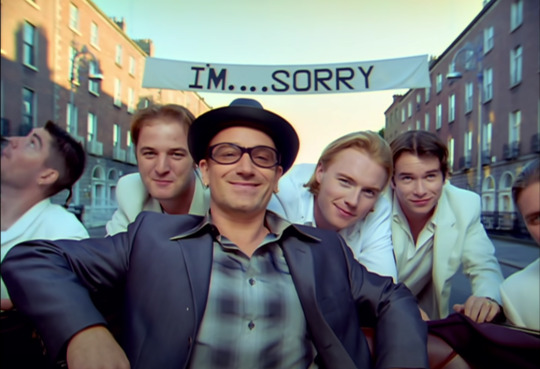
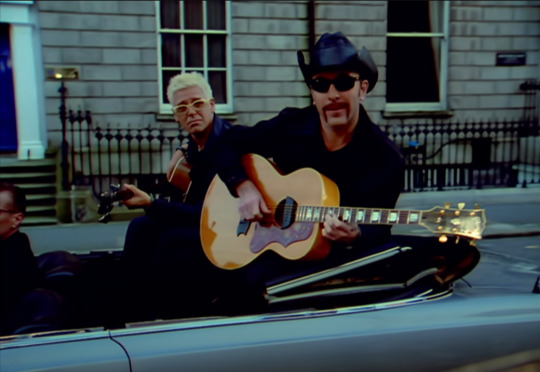



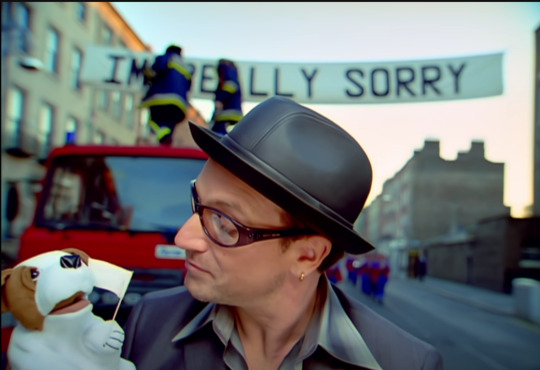
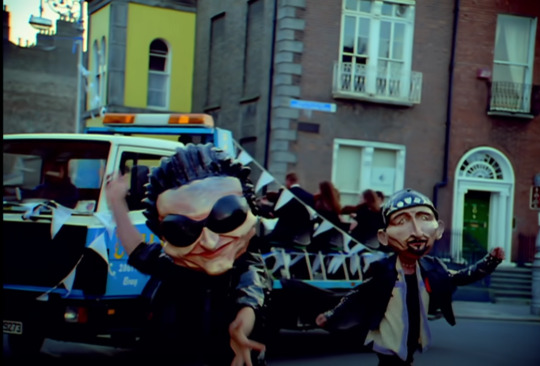
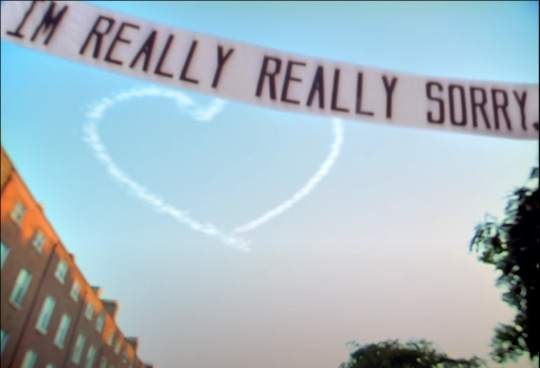

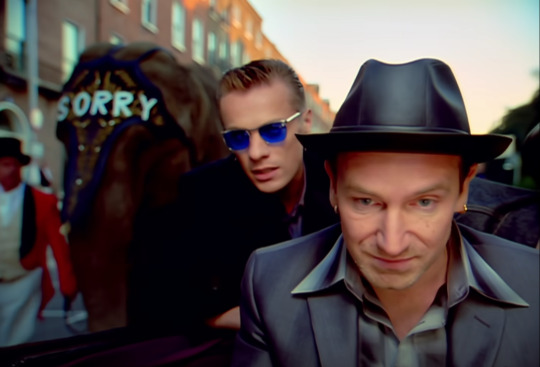
Sweetest Thing, U2 (1998)
Real men don't cry apologize. It's time to acknowledge the elephant in the room. - Baby Bono apologizing to his wife in the streets of Dublin for forgetting her birthday. - 🍀🇮🇪👨🎤❤️
Blue-eyed boy meets a brown-eyed girl. (Oh, the sweetest thing.) You can sew it up, but you still see the tear. (Oh, the sweetest thing.) Baby's got blue skies up ahead But in this, I'm a rain-cloud, Ours is a stormy kind of love. (Oh, the sweetest thing.)
#ireland#dublin#Ali Hewson#Bono#U2#sweetest thing#tough love#apologize#1998#the edge#Kevin Godley#music video appreciation#fitzwilliam place#riverdance#Georgian mile#merrion square#The Joshua Tree#vertigo#where the streets have no name#I still haven't found what I'm looking for
3 notes
·
View notes
Text
Kenure Park
After Monday’s post about the melancholy fate of Kenure Park, County Dublin, here are the other remains of the estate: two gate lodges. The first of these, close to the centre of Rush town and erected around the mid-19th century, stands inside curved quadrant walls of wrought iron concluding in granite piers with vermiculated bands and concluding in spherical finials, this work. believed to date…

View On WordPress
3 notes
·
View notes
Text


Newbridge House, considered the finest Georgian mansion in Ireland
#Newbridge House#County Dublin#Irish mansion#Conor Lynch#Georgian architecture#country house#rural landscape#1746#Irish countryside#18th century#country estate#British Isles
15 notes
·
View notes
Text

Embark on an exclusive tour with Liam Greene, exploring Dublin's Georgian treasures. Stroll through elegant squares, visit iconic landmarks, and delve into the rich history that shaped the city's character. Witness Dublin's enduring charm up close.
#dublin tour#georgian architecture tour Dublin#georgian architecture tour#best walking tours#dublin walking tours#walking tours#dublin walking tour#dublin#ireland
0 notes
Photo

In the heart of Dublin, the air is imbued with a vibrant tapestry of life, where historic cobblestones dance beneath the rhythmic footsteps of eager wanderers. Picture an oil painting splashed with the bold colors of a lively street market, where the scent of warm soda bread mingles with the sweet aroma of freshly brewed Irish coffee. The sun sets gently, casting a golden glow on the rooftops, illuminating the intricate facades of Georgian buildings adorned with cheerful flower boxes bursting with life.
Amidst the lively conversations spilling from cozy pubs, the laughter of locals resonates like music, rich and inviting, while the distant strums of a wandering busker's guitar add a melodic echo to the spirited atmosphere. Gaze into the emerald ripples of the River Liffey, as its waters shimmer with reflections of fiery oranges and deep blues, revealing the soul of a city that embraces its stories with open arms.
Each brushstroke of this vibrant Dublin captures the essence of an eternal celebration, where history and modernity entwine gracefully, and every corner beckons to be explored. Delve into the essence of Dublin, where the spirit of friendship and hospitality weaves a colorful narrative that paints the canvas of the heart.
Discover more travel tips for City Breaks in Europe: book24h.online
#Dublin#city#cobblestones#wanderers#market#soda bread#coffee#sunset#rooftops#Georgian#pubs#laughter#music#busker#River Liffey#emerald#reflections#stories#history#modernity#hospitality#celebration#friendship#culture
0 notes
Text
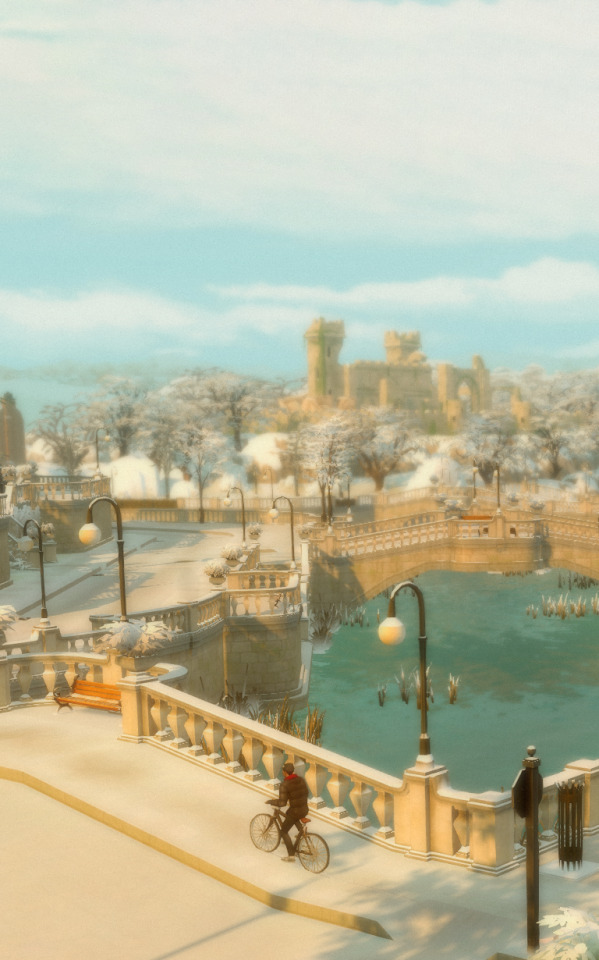

On the bike again, sun high, cutting through salted road tracks around Fairview Park. Over the Tolka, the Royal Canal, O’Connell Bridge across the Liffey—water like slush in there, churning instead of flowing. I could do this ride with my eyes shut. A hundred times, weaving the city’s arteries, knowing them like the veins on my wrist. But under snow, Dublin is extraterrestrial. A surreal experience as the lights turn amber to red, pedestrian crossing clicking with nobody to cross. Shadows are sharp and perfect as the old Georgians along the quay throw geometric shapes like paper cutouts. My gears clunk, chain clicking, careening around Westmoreland Street. Tyres bump over tram tracks. Barricades of snow, shovel-blackened, line the edge of every road. Icy wind in my face draws tears from the corners of my eyes as I pedal on.


Jen’s living in Ranelagh these days. Basement flat of a little redbrick place off Sallymount Avenue. It’s horrendous in that sort of authentic Dublin way. Obligatory bathroom mould, kind of thing. Paint on one side of the house is bubbling with damp, and the perpetual smell of old cigarettes permeates every corner. A film of sticky yellow residue from a long departed smoker still clings to the low ceilings, which I ran my finger though the last time I visited. Rolled it into a gooey dust ball and stuck it in Jen's face when she was trying to wash the dishes.
She’s in her bedroom painting her toes when I haul my bicycle through the weeds and chain it to the fence. I pound my fist on the window and frighten her. Mouth in a startled little O before she grins at me, her usual wicked smile. A mouth full of short, rounded teeth.
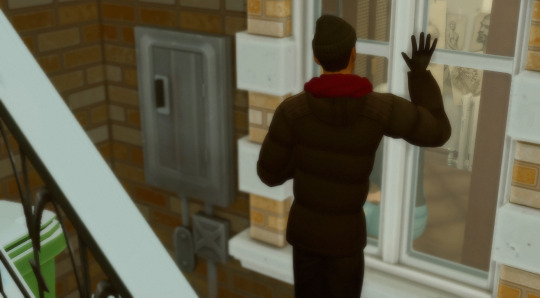
“Well you. Are you chilly?” she says, unlatching the door.
“Yeah,” I launch myself inside, grabbing her head and kissing the top of it a dozen times while she cackles. She’s done something weird to her hair again, half white, half black, split down the middle like Cruella De Vil. “Any luck with those dalmatians?” I ask. She ignores me and slams the door behind us.

“Welcome home, stranger,” she heads for the kitchen, MDF cabinets bloated with water damage. Barefoot, her heels are blackened from the dirt of the floor. “Will you have a coffee?”
“Yeah, thanks. That’d be really nice.” Seat myself at the table then. Textbooks strewn about, eyes glazing over the titles as the kettle boils and she spoons instant coffee into a mug. “How’s college?”
“Shite. How about you?”
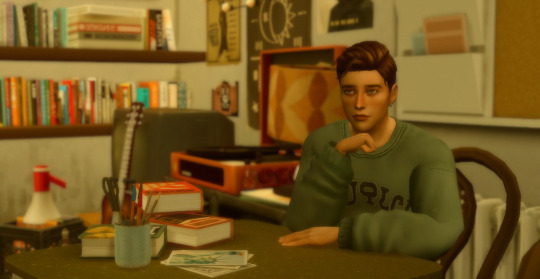

“It’s alright.”
“Are they still wanking themselves off over your paintings over in Berlin? Turner the Wonderboy.”
I just smile. “I’m doing fine.”
She throws her head back in a laugh. “Say no more. And the rest of it all? The job?”
“Oh, Christ.” Weakened from even thinking about it, I have to put my head on the table.

“Not great, is it?” Jen sinks into the seat opposite and slides the mug to me. I hold it, slightly too hot to touch, and let the warmth prickle through my palms. Staring into its murky depths like a crystal ball, while chunks of undissolved grounds float about the surface. A pair of eyes laden with dark circles stare back.
“Do I look corpse-like these days? I feel like I’m sort of rotting from the inside out.”
“No. Sure you’re only gorgeous. You get more gorgeous every time I see you.”
“Hmph.”
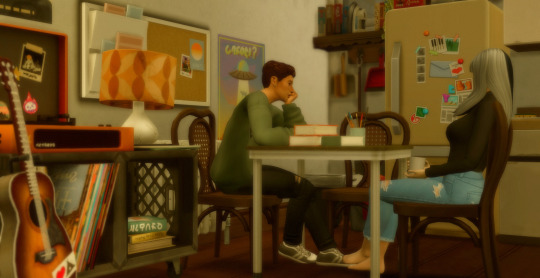
“Welcome to the working world,” she says, her glee barely disguised. I’m starting to see things for how they are now, in a depressing sort of way. Looking back on things I said to her before, about not affording things or not feeling welcome in certain places, and cringing about it. To know I was ignorant and spoiled, going about my life with my nose in the air while my friends faced struggles beyond my comprehension. Even last year, when Jen moved here, I told her to pick a nicer place. Somewhere with natural light, closer to town, assuming my logic was flawless. I want to tear through the fabric of time and sock myself across the jaw.

Sipping her coffee, Jen leans back and gazes out the tiny window into the yard out back. It’s a tip out there. A nearby business uses it to store its bins and dump its miscellaneous waste, though nobody actually knows if they have permission to do so. “And how’s the lovely miss Astrid? The most recent pics I saw of ye were off in Slovenia or somewhere, wasn’t it?”

“Oh, yeah, our anniversary trip. That was November. She’s fine. She’s…” I trail off and stare at the table. The upstairs neighbour crosses the room overhead, the thump of feet shaking the ceiling. The TV goes on. It’s so loud we can hear every word of the afternoon weather report. “She’s doing well with her ceramics,” I manage. “She’s got an exhibition on next week, which she’s pretty excited about.”
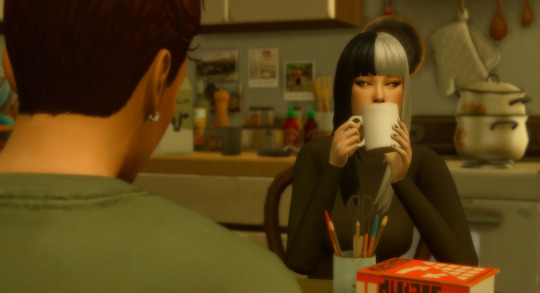
“Oh, wow, yeah. Good for her.” Jen’s smiling encouragingly, eager to show that my relationship with Astrid doesn’t bother her. Wants me to know she supports the choices I have made, even if lately I don’t even really support them myself. It’s my fault it’s like this anyway, with Jen, I mean. The times she’s expressed doubts about the fairness or ethics of my relationship, I’ve made her feel like her opinion is an imposition. Defending Astrid, like, no, she doesn’t mean it like that/I know it sounds bad, but it’s just the way she says it/She finds it hard to sound sincere. “I just care about you,” she said glumly during a call, and I made sure to smile, so it came across in my voice. “I know, Jen, and I love that about you. It’s just that it’s hard to ‘get’ a relationship when you’re not in it. I don’t want to feel you’re judging her when you actually just don’t know her.” Eventually, Jen stopped venturing beyond the realm of small-talk. This bright smile is her way of staying out of it.

“I’ve seen her ceramics online, actually. They’re cool,” she says.
“Oh, yeah? You think?”
“I followed her on Instagram a while back, yeah,” her smile strains before she adds, “they’re not ceramics you’d have clattering around your kitchen, though, are they? They’re a bit out there.”
“Yeah, so basically they’re not meant to be functional. They’re meant to reflect, like, states of metamorphosis and conflict, creating, um, organic shapes inspired by human figures and the landscapes of northern France where she has spent a lot of time. She fires them multiple times to kinda represent the passage of time. It’s a whole statement, rather than, you know, a mug to have your tea out of.”
“Aw yeah. Dead cool. I wouldn’t have got all that from looking at them.”
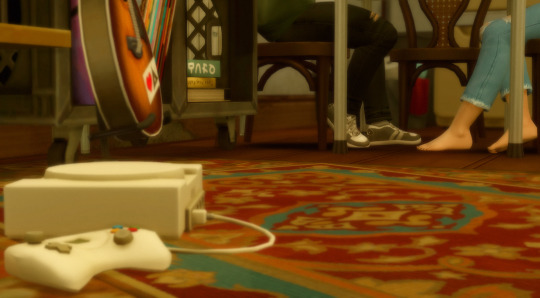
Silence. Jen takes a slow sip of her coffee, eyes flicking toward the window. “All good to see Shane later?”
“Yeah. That dinner thing? Of course. Why?”
She nods, still looking out, like she’s working something out in her head. Then: “Did he—” She stops. Frowns slightly. “Never mind.”

I sit up. “What?”
“It’s nothing.”
I just look at her.
She sighs. “Did he text you about Evie’s birthday thing?”
A jolt of energy moves between us. “No,” I say, carefully. “He didn’t.”

“Oh.” A wince. “Shit. He probably meant to. You know what he’s like. Or maybe he texted me and assumed I’d text you, which is my bad…” she does not stop speaking, and I do not stop her, both knowing if I allow her to go on, we will not have to acknowledge the situation, as the room tips slightly, becoming unreal.

“No, no, it’s fine. It’s totally fine,” I hear myself saying in between gaps in her words, weaving in and out of her cyclical ramblings, reassuring myself, really. “Simple mistake. It’s no big deal. It’s fine, it’s fine. Jen. Nobody’s fault.”
“No, but we don’t have to go,” she’s saying. “I told him maybe, you know, maybe if we felt like going, but it’s going to be mostly people from her college, I think. It could be completely be weird if we went, you know? Since we don’t know her anymore, really, do we?”
“No, you’re right, yeah. We wouldn’t have to.”
“And when I saw her months ago, she said she doesn’t care about any of it anymore, so.”
I stop. “You saw her?”

Jen blinks. “Yeah, yeah. I saw her at some bar. Did I not tell you that either?”
“Uh, no. I think I’d remember if you did.”
“Oh. Oh. Well, yeah… I was out one Friday in this bar on Dame Lane. One of those horrible swanky places where cocktails are like a million euro. Ran into her in the toilets fixing her makeup.” Her eyes flicker away, avoiding mine. “I didn’t even know it was her at first. She was like… I dunno, like, all sharp angles, tiny little dress with her whole back out. Different, you know?”
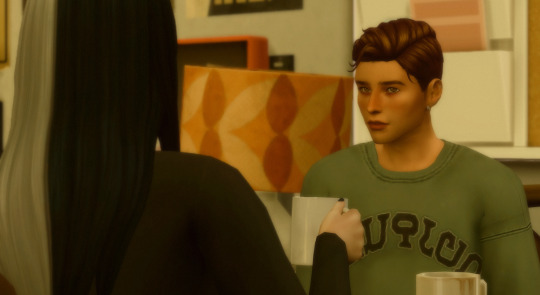
Leaning forward now, chewing on that word. Different. Fascinated by its implications. The feeling she’s some unlockable character, an outline with features unrevealed. Discover myself loathing the idea of change. I don’t want it. I want her to be where I left her, on that beach, lying on a beach towel in some perpetual summer, waiting for me to come back.
“How?”
She shrugs, a forced gesture. “Oh, like, she just looked like she belonged there.”
“That’s not what you actually mean.”

She presses her lips together. “Okay, well, like, she was cold, Jude. I tried to bring up that summer, just to clear the air, say I was sorry for sticking my nose in, but she shut it down. Properly shut it down. Acted like I was dragging up ancient history that no one but me even cared about.”
A flicker of something ugly moves through me. “Right.”
“She actually said, why are you talking to me about this?” she shakes her head. “Like I was a weirdo.”
“Oh.”

“And then about half an hour later,” Jen hesitates, then, knowing the next part will land wrong. Saying it anyway. “She was outside, tongue kissing some guy in the smoking area like her life depended on it.”
A sharp pulse in my stomach. I have to glance away. “Really?”
“Yes.” She lowers her voice to a gossipy whisper. “Aggressively. Like she wanted people to see.”

A beat of silence. We look at each other. “Well,” I say, my voice light and detached as I can manage. “I suppose she can do what she wants, can’t she?”
“Yeah, power to the women, et cetera. He wasn’t handsome, by the way. He was kind of vegetarian looking.”
I squint. “I don’t actually give a shit how vegetarian-looking the men she kisses are. That’s not something I’m up at night wondering about.”
She laughs. “Oh, right, well, I’m just saying. Anyway, that’s just reminded me I have to tell you about this lad my mate was going out with. Talk about weird men. He was into improv comedy, and the first date, took her to an open mic comedy show…”

I stare blankly while she talks. Words swimming around me like abstract sounds muffled behind a screen. Sharp angles. She said. Where? Her cheeks? Her hips? A vision of said backless dress, curve of her spine, leaning over a sink. Blue lights. The Evie in my head covers her face in embarrassment at the thought of wearing a dress like that. “God, no,” she cries. “You wouldn’t catch me dead. I’d never.”
“... and he bombed.” Jen says with emphasis. “Like, nobody laughed. They actually heckled him.”
“Oh, gas.” I reply.
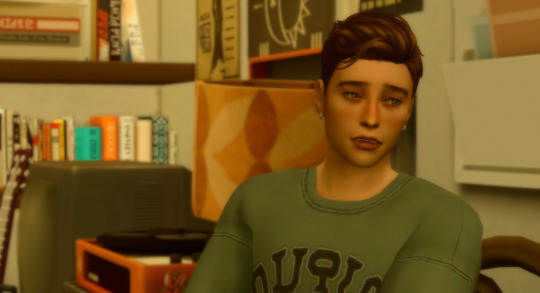
And kissing this vegetarian-looking guy. What is it with that? Liam from the surf shack was relatively vegetarian-looking, thinking back on it, wasn’t he? Big leather sandals on him. Is that actually just what she likes? Feeling threatened now by men who get the lentil burger off the pub menu. I could take him down onto the floor in three seconds with the power of animal protein. I boast to imaginary Evie inside my head. She’s not listening to me. Her boyfriend is showing her how he makes deodorant out of coconut oil.
“... she went on a second date too, after all that. And it was so much worse…”

I drain my coffee, drum my fingers on the side of the mug. Get up and wander towards the window and look out of it. “Mm. Some guys are just so fucking weird,” I say as Jen expands the universe of this nightmare date, introducing the element of one-sided polyamory.
“... anyway, she’s better at telling the story. I’ll get her to tell you herself. Hey, maybe after dinner I'll invite her over. We could grab a few cans and just hang out here. What do you think?”

I’m fixated on a robin, hopping from one snowy twig to the next. “Hm? No. I think I’ll go to the party.”
She stops. Makes a sound that isn’t quite a laugh. “Wait, are you messing?”
“No, whatever. We’ll just swing by and say hello.”

I don’t look around to see her reaction, but feel it, a charge in the air. “Jude, like… Sorry, but what’s the point of that?”
“A few drinks. It’ll be fine. Just say happy birthday to her, and then we can go. I just want to be civil.”
“Okay.. are you sure?”
“Yeah, yeah, of course. It’s not a big deal. It’s not like that anymore between us anyway, you know? She doesn’t care, and I obviously don’t care either. It’s just, like, two old friends running into each other.”

She doesn’t speak for a moment, then with resignation, says, “alright, I suppose if that’s what you want to do.”
I stretch. Easygoing. Roll my neck and shoulders, shaking something off me. “Yeah. It’ll be fine. It’s casual.”

The silence sits between us, stretching out as she watches me, waiting for something. But I don’t give her anything. Nothing to give.
Outside, the robin takes fright and flits away, disappearing into the perfect blue sky.
Beginning // Prev // Next
#lucky boy 2012#SHE'S COMING LADS#I love how this looks I have to say#britechester is beautiful in the snow#like the inside of a snowglobe#adore tbh#also Jen is so hot here help#and I love these little houses!!!!! They're so cute and i'm so proud of them#might upload or something idk#but there's a lot of cc so also probably not#sims 4 storytelling#ts4#sims story#simblr#show us your story#show us your sims
87 notes
·
View notes
Text

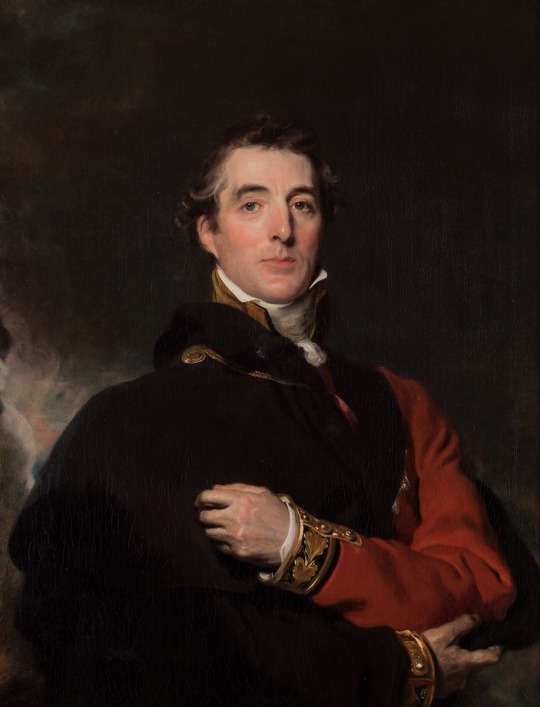
Horatio Hornblower:
a. “He is the wettest soggiest boat man who hates being on a boat and hates his life but is actually very good at being a boat man and fighting Frogs. He canonically invented the shower and has a lot of other boat men hose him down every day. He has so much sexual tension going on with Lieutenant William Bush.”
Arthur Wellesley:
"So, I saw that you had no propaganda for the Iron Duke himself and thought that should be corrected, because I cannot let this man go unloved.
He is the ultimate sexyman. I don't really get that title or the requirements but I do know this man and he is the ultimate in Regency-era sexiness.
Field Marshal Sir Arthur Wellesley, First Duke of Wellington, whose full list of titles merits its own Wikipedia page, he had so many (including Prince of Waterloo of the Kingdom of the Netherlands), was so well known for his debonairness that he was often called "the Beau" or Beau Wellesley.
Our dear Duke with his eyes of "a brilliant light blue," is quite the underdog made good. The fourth son of an Anglo-Irish aristocratic family, he was a bit of a loner as a child, whose star was eclipsed by the academic success of his older and younger brothers. Yet he had a remarkable talent for the violin, which as we know from Mrs. Jefferson is quite a good quality for a man to have. As a young man he was considered extremely good humored and drew "much attention" from female society. The Napiers of Celbridge thought he was a "saucy stripling" and he was also considered quite mischievous. Yet he also had a rich inner life, reading and contemplating the great philosophers of the day.
Yes, we know about his military victories in the Peninsula (the position of Field Marshal of the British Army and the accompanying baton were created for him) and his success at Waterloo, but he was also both romantic and a ladies' man. (I could go on about the military success but that's not really what this is about, is it?)
Want the romantic side? He fell in love with Kitty Pakenham while a lowly aide-de-camp in Dublin but, with no real position or prospects, was laughed away by her brother when he sought to marry her. In a fit of pique he destroyed his violin and turned firmly toward progressing his career. Over a decade later, after he had made something of himself in India, he learned she hadn't married, supposedly because she was still pining for him. Reader, he married her, despite thinking she'd grown ugly, and got two children from her in less than two years. I'm not kidding, this man was virile. They married in April of 1806, their first son was born in February, 1807, and their second son was born in January 1808. Although he wasn't sexual faithful to her, Wellington wore an amulet she gave him for over twenty years, and was still wearing it when he sat with her on her deathbed. When she was surprised he still wore it, he told her if she'd just bothered to check in the last twenty years, she'd have found it. Despite surviving her by twenty years, the Duke never remarried.
Now, please don't think badly of him for the lack of sexual fidelity. It was the Georgian era. Sexual fidelity was not a part of marriage in high society. Men didn't sleep only with their wives and some wives could be quite happy with that (for one, it's much easier not to have one pregnancy after another when your husband is sleeping with someone else). Not that women weren't also sleeping around. Which brings me to one of Wellington's more… interesting conquests: Lady Caroline Lamb, wife of William Lamb (the future Second Viscount Melbourne and Prime Minister). Why do I know that name, you ask? The OG pixie manic dream girl, Caro's much more notably known for her affair with Lord Byron. After that particular bit of nonsense, she was in Brussels with the rest of the English aristocracy during the 100 Days/post Waterloo. She and the Duke supposedly slept together and she took his cloak away as a souvenir.
Who else did the Duke liaise with? Well, there were the usual flings with actresses and singers, such as La Grassini. As previously noted in another post on this tumblr, he was noted as a stronger, better lover than Napoleon by another of their mutual lovers. Wellington also was a client of Harriette Wilson. He visited her when she was in Paris after the Duke of Beaufort bought her off, though this was before Beaufort stopped paying her, prompting her to publish her memoirs. She canvassed her old lovers, including Wellington, to see if they'd pay her not to be in them. Wellington send her a note in return saying "Publish and be Damned." Something about his succinct dismissal of her is just so hot.
Oh, want a bit more of Wellington being a bad boy? In 1829, while Prime Minister, he got into a duel that still is commemorated almost two hundred years later. King's College, London, was set up while Wellington was also advocating for Catholic Emancipation and this led to Lord Winchilsea publicly insulting Wellington's honor to the point that the Duke (who'd never dueled before or supported dueling generally) called him out. They went to Battersea Fields and settled the matter with pistols. Wellington won and Winchelsea apologized. King's College celebrates "Duel Day" every March.
Even better, want to read about Elizabeth Bennet and the Duke being witty and falling in love? Complete with scenes of the Duke showing he knows what to do with his cannon? Then let me recommend the third variation of An Ever Fixed Mark, A Dalliance with the Duke. I dare you not to vote for him for all eternity with that portrayal in your head."
84 notes
·
View notes